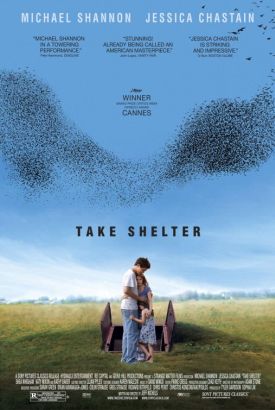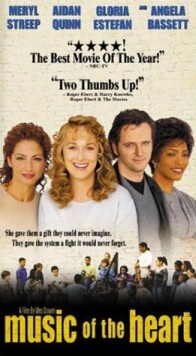Take Shelter
It’s a law of narrative as old as narrative itself: if the prophecy comes true, you’ve got a story; if it doesn’t come true, no story. Why is that? I think it must be because we are programmed by God or Evolution (the “God-gene”) to think that the universe makes sense. At any rate, people certainly do seem to cling to the notion that there is a logic in things as they are, also known as reality, which some of them at least can see all at once. If you recognize the pattern, then you can predict the future. That’s what story-tellers themselves are doing, after all. And if the universe is a story, someone must know how it comes out. Well, there is a prophecy in Take Shelter, written and directed by Jeff Nichols (Shotgun Stories), but he obviously thinks it makes a better story if he plays coy about whether it comes true or not.
Prophecies may come in dreams, of course, but the word “dream” also has a special meaning when it comes to movies, which are so often dream-like themselves. It’s not for nothing that Spielberg-Katzenberg-Geffen go together under the collective name “Dreamworks.” But the Hollywood dream-factory has its own complicated relationship with the country that is its primary market and that has its own peculiar relationship with something called “The American Dream.” The Hollywood version of this is the dream, often an “impossible” one, which can be “followed” to the inevitable moment when the dream comes true. Following one’s dreams is as predictably profitable as believing in prophecy, and this is the case even when the dreams are bad. That’s why, in the movies, conspiracy theorists and other sorts of crazy people are nearly always right. No movie conspiracy is ever imaginary.
These are complex and difficult matters that were already firmly in place as so many snares for the unwary long before Mr Nichols took up his pen, and to judge by the critical acclaim you might imagine that he has made a considerable success in navigating his way around them. It’s true, too, that his movie has a lot going for it — especially spellbinding performances from his two leading characters, Michael Shannon as Curtis LaForche and Jessica Chastain as his wife Samantha, and some spectacular visual effects that invite comparison with Kurosawa’s Dreams (1990). The problem with it is that in the end it cannot reconcile Curtis’s dreams — which are all to do with threats of a spectacular and quasi-supernatural nature to his little family, including a deaf daughter (Tova Stewart) — with reality.
The strength of the movie is that Curtis himself sees the problem. When he was ten years old, he watched as his mother (Kathy Baker) drifted away into the dreamland of paranoid schizophrenia and had to be institutionalized. Now he is afraid that the terrible dreams he is having portend a similar fate for himself, which would be scarcely less horrific than the alternative peril, namely that he is getting some kind of supernatural warning of impending doom to his family. Methodically, manfully, he pursues both explanations simultaneously, consulting his doctor, reading books from the library (Understanding Mental Illness) and visiting a counselor at a mental health clinic at the same time he is taking out a risky home improvement loan to build an elaborate storm shelter in his back yard.
All this is rather touching on Curtis’s part, though not so much on that of Mr Nichols who, it seems to me, really does have to make up his mind between the two alternative explanations. Trying to have it both ways, as he does, is a cop-out, a lapse of verisimilitude which may be no big deal to those who live comfortably in our age of cinematic fantasy but which to me devalues and cheapens all the hard work he has done up to this point to make the movie look real. The movie’s ending, which is bound to provoke a great deal of unprofitable discussion, seems to me to serve no other purpose than to indulge that tiresome adolescent profundity about the ultimate uncertainty of the boundary between reality and illusion. Thus he avoids breaking with Hollywood magic and comfort the audience with the reflection that we are still in movieland after all.
Beneath the surface of Take Shelter, I’m afraid, there lurks a trace, or maybe more than a trace of the ‘60s belief in the truth underlying madness — that old sophistry associated, perhaps unjustly, with the names of Norman Mailer or R.D. Laing that the insane are not delusional but merely in touch with different realities from the rest of us. There is a half-hearted attempt to relate Curtis’s fears to those that we all have of natural and environmental perils, but anyone with any experience of madness knows that there is a huge and unbridgeable chasm between the fears of mental health and those of mental illness. The movie is much better when it focuses on what almost emerges as the central matter of trust between husband and wife, but even this loses much of its impact in the face of the author’s ill-considered agnosticism about what’s real and what isn’t. He only succeeds in reminding us that the movies, nowadays, are what isn’t.
Discover more from James Bowman
Subscribe to get the latest posts to your email.






